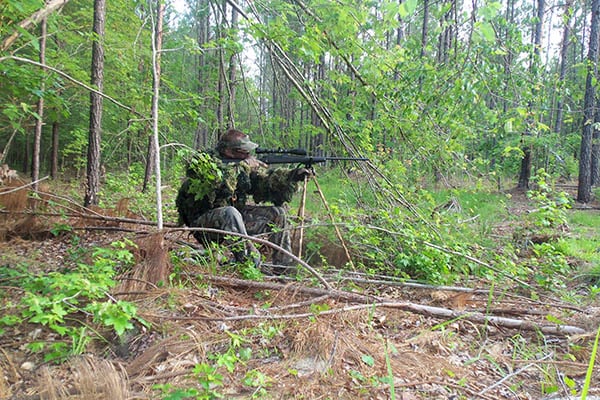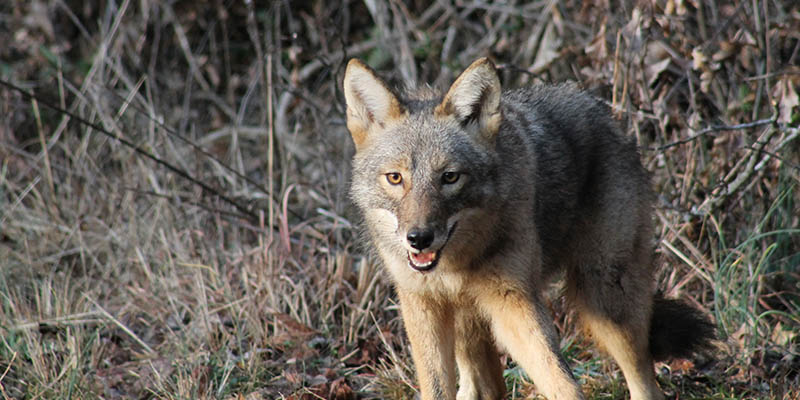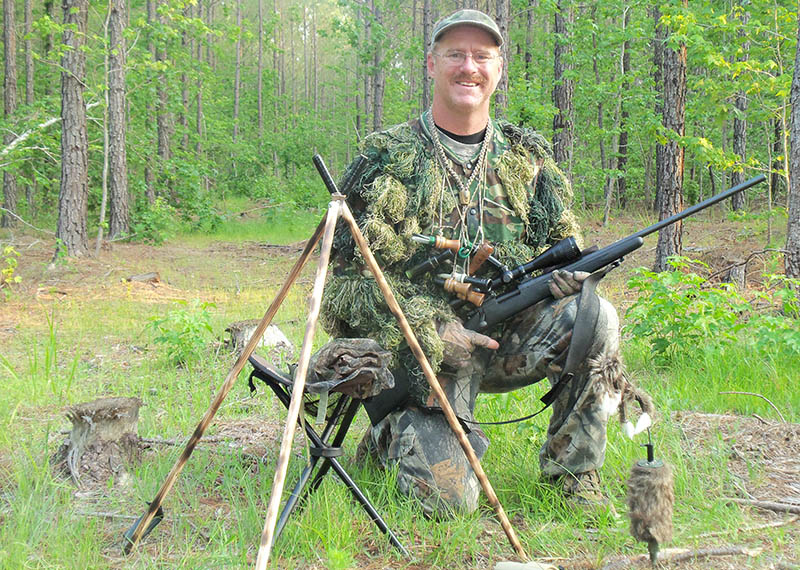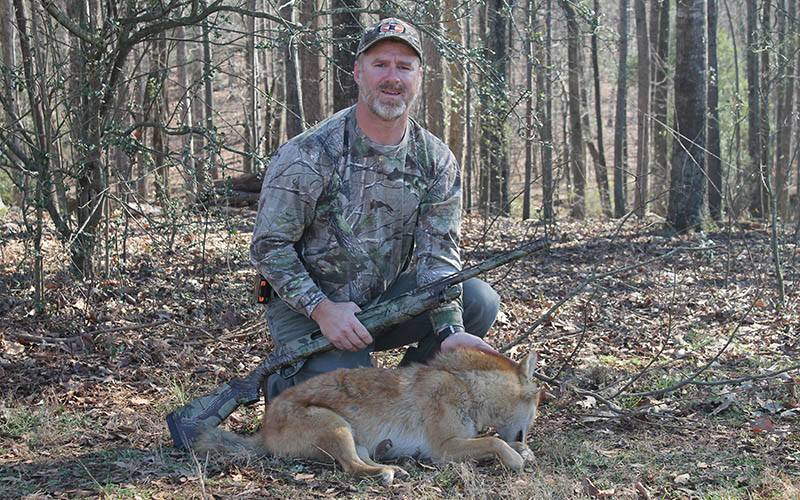
Last Updated on
By Pete Rogers
Spring carries with it a certain liveliness. The budding of fresh leaves and grass tend to encourage many to dust off the bitterness of winter and begin to get a fresh spring in their step.
It is also a time for rebirth – and birth in general. Mother Nature is an amazing thing. She is able to time the birth of babies with the availability of natural food. Both prey and predators have adapted to this calendar. Small mammals like rabbits, vole and others are having babies because of the availability of green foods, likewise the predators, bobcats, coyotes and fox are also having babies. This creates a great situation for the predator hunter.

When female predators start to have their litters, it creates in them a desire to protect and to feed. Initially, she will linger in the den to nurse and recover from the birth process. But she does not do without eating. Often her mate will hunt more aggressively and share much of his food with the mother of his children. Other times he will stand guard of the den while she hunts and stretches her legs a little and gets a reprieve from the duties of the den.
This makes calling and killing spring predators easier than at other times of the year. The need for food is a strong drive in animals. For those that rely on the skill of hunting for their food, it is a stronger desire than the grazers due to the availability. Hunters who can exploit this can put more songdogs in their sights this spring.

Hunting coyotes is really similar regardless of the time of year you choose to do it. Find a great location with excellent visibility and set up with the wind in your favor and begin calling. But the nuances of the spring mean that some of the tactics need to change to be more successful. Here are five tips to remember to put more spring songdogs in your sights.
1. The setup is always critical
Alerting coyotes to your presence is something that is preached in every circle of experts. Being careful not to alert the songdogs to your presence can spell big dividends. Use the terrain to your advantage. If you are planning on hunting a specific draw or field, enter from the downwind side and slip into the field from the back door. Set up along the edge and let things quiet down for several minutes. Because the truth of the matter is that regardless of how quiet you think you are, we humans make a lot of noise entering the woods. After five or so minutes you are good to begin your calling sequence.
2. Keep the sun at your back – hunt the shade
The foliage of the spring makes finding good cover a lot easier than it was a few weeks ago when the woods were barren. Sitting near some cover that allows you to hide well will help to pull the dogs in closer. Some of the portable nets that turkey hunters use can also be useful when cover is slim. But brush and leaves will hide your outline and make your presence less known. The sun at your back will help because the coyotes will be looking directly at the sun and be somewhat blinded. Lastly, the sun helps to illuminate the distance and helps you to spot movement.

3. Choose calls that will entice the dogs to respond
I am a big believer in electronic calls. But I am also a believer in using sounds the dogs are not used to hearing. It is fact that most predator callers use the rabbit in distress call to lure in coyotes, and without question, it is perhaps the most successful sound ever used. But it is also over used. Study your surroundings, learn what the coyotes are eating in your area and make those sounds. It may be a rabbit sound, but it also may be a distressed chicken, or baby goat. It may be voles and mice. Whichever it is, make sure you give it a fair chance before switching sounds. Puppy sounds are also good during the spring as are fawn in distress due to the tendency of deer to be fawning now. While we are discussing calls, be careful with your volume. It is a fine line between too loud and too soft. Remember the canines can hear a lot better than we can and they can pick up your call at hundreds of yards. If using high volume do so sparingly. Once you have his attention, dial back the volume to make it seem that the critter is either further away, or is suffering.
4. Use shooting sticks
It is difficult to get a good shot at a coyote at one hundred yards, now compound that across a fresh bean field and you are shooting at 300+ yards. The use of a good pair of shooting sticks such as the Bog Pod or Caldwell shooting rest can be a life saver. Even a bipod mounted on your gun can greatly increase your accuracy. The stability these provide are excellent and will help to make quick and clean shots. They are lightweight and very portable and once you get used to using them, you will never go back to anything else.

5. Be patient
I have seen so many new predator hunters pull into a location, get setup and blast out some calls for ten minutes and then pack up and head out when nothing jumps in their lap in the first ten minutes. Spring songdogs demand patience. Subtleness and patience will win the day. A typical stand will last a minimum of forty five minutes. From setting up, letting things quiet down, calling, pausing, calling, pausing, calling, long pause, calling, long pause, calling, and longer pause. All totaled it can easily last forty five minutes. Even then, I often wait to see if anything is sneaking in for a closer inspection.
Calling and killing spring songdogs is a lot of fun and exciting. It can be days filled with action while adding a great service to your deer herd. By removing the dogs during the fawning season and during their denning season, you up the ante that your efforts will have a greater impact on the overall population of predators.





Leave a Reply